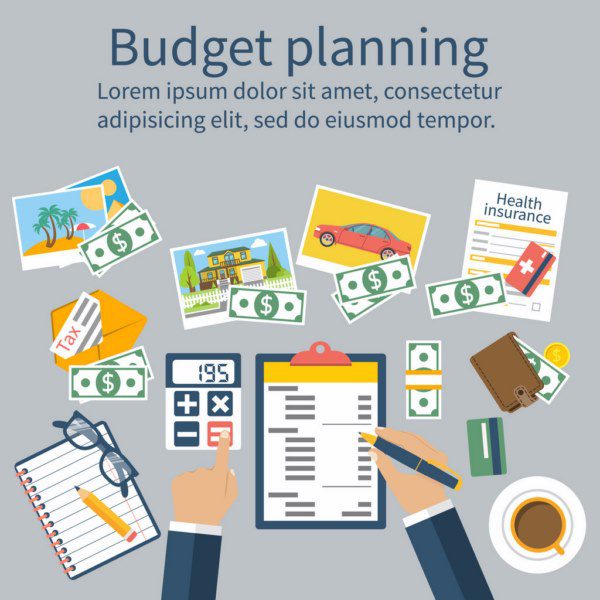Personal Finance Management is essential to easing money anxieties, yet the thought of creating budgets, managing debt, deciphering investments, and untangling statements makes many nervous. However, taking command of finances opens opportunities, so it’s critical to ease such money-related worries by learning financial skills like budgeting, understanding investments and statements, and tackling debt.
This comprehensive guide breaks down the key concepts, strategies, and tools you need in your arsenal to take control of your finances and chart a clear course toward long-term prosperity and financial freedom. We will methodically stroll through the foundational building blocks of personal money management. Next, we will tactfully walk through specific techniques for artfully cutting unnecessary spending, aggressively attacking toxic debt, and stealthily stashing away savings. Finally, we will unravel the overwhelming mysteries shrouding investing using simple analogies to make growing your money more accessible for financial newcomers while constructing guardrails protecting you from catastrophic risks threatening newly built wealth and stability.
Armed with the strategies, tools, and knowledge in this playbook, you’ll gain the clarity and confidence needed to make smart financial moves. Now, let’s get started!
Learning the Building Blocks
Before attempting to manage your finances, it’s vital to learn the essential principles that drive monetary decisions. Think of these concepts as the foundation that supports all future efforts to budget, save, invest, and more.
Income Generation
The starting point of your financial situation begins with income earned from your job, side hustles, investments, government benefits, and any other sources. Understanding what goes into your income is crucial for building a realistic financial plan.
Some key aspects around income include:
Predictability of Income Streams
- Salaried jobs vs. hourly wages vs. commission-based pay all have varying levels of predictability around the amount and timing of income.
- Irregular income like bonuses or investment gains needs to be budgeted differently than predictable paychecks.
Increasing Earning Potential
- Additional education, certifications, and developing side skills can expand your income opportunities in your current or alternate careers.
- Seeking promotions, finding higher-paying jobs, and monetizing hobbies can raise your earnings over time.
Having multiple growing income streams helps provide financial flexibility to take advantage of opportunities and better handle unexpected expenses when they arise.
Spending Prioritization
Not all spending is created equal when it comes to impact on your finances and life. The smart money manager learns to differentiate between needs, wants, and savings.
Personal Finance Management: Needs
These are non-negotiable expenses tied to basics like:
- Housing
- Healthcare
- Transportation
- Food
- Minimum debt payments
- Emergency fund contributions Cutting expenses here affects daily life quality and ability to work.
Personal Finance Management: Wants
Discretionary spending that’s nice to have like:
- Premium cable packages
- Frequent dining out
- Expensive vacations
- Fashionable clothing
- Luxury vehicles Trimming expenses have little impact on necessities.
Personal Finance Management: Savings
What’s left after spending gets allocated here, including:
- Retirement accounts
- College funds
- Down payment for a house
- Future big purchases: This allows your money to work for you over the long run.
Understanding trade-offs between these spending categories unlocks the ability to better align the usage of your limited income.

Crafting a Realistic Budget
Personal Finance Management requires creating a monthly budget to align income and spending after getting the fundamentals down. Think of your budget as a blueprint, ensuring you support necessities, financial goals, and entertainment without overspending. A good budget appropriately divides income for needs, savings objectives, and reasonable fun while avoiding debt traps through overextension.
This doesn’t need to be a scary process. Just follow this step-by-step guide to develop your personalized financial roadmap.
Benchmark Average Spending
Before making changes, you need visibility into where your money currently goes each month. Pull 3 to 6 months of detailed spending across all accounts to understand existing habits around both needs and discretionary expenses. This snapshot forms the baseline to measure future budget progress.
Potential spending categories:
- Housing – rent/mortgage, property tax, utilities, maintenance
- Food – groceries, dining out
- Transportation – car payment, insurance, gas, repairs
- Insurance – health, disability, long-term care
- Debt – student loans, credit cards, personal loans
- Entertainment/Lifestyle – streaming services, memberships, travel
Project Realistic Monthly Net Income
Tally predictable monthly income from salary/wages, side hustles, investment gains, child support, and other sources. Be conservative in estimates of variable income like bonuses or commissions.
This analysis reveals how much net income exists monthly to support your lifestyle and savings goals after accounting for taxes and benefits deductions.
Assign Jobs to Each Dollar
With visibility into both average spending and reliable monthly net income, now make intentional decisions allocating those dollars across necessities, financial priorities, and fund expenses.
If total spending exceeds net income, adjustments need to happen, like reducing certain expenses or targeting additional income streams until the two numbers balance.
Track Progress Over Time
As you execute your new spending plan, track activity against monthly budgets set for each category and your overall bottom line.
Reviewing trends will identify areas needing course correction like overspending wants while underfunding needs or financial priorities.
This feedback loop lets you continually refine your budget for maximum impact on improving your financial situation.
Attacking Toxic Debt
After budgeting, the next financial priority for many becomes attacking debt accrued from student loans, credit cards, personal loans, medical bills, and other sources.
Prioritizing the elimination of high-interest debt frees up cash flow, allowing you to achieve other goals like saving for retirement, building an emergency fund, or purchasing a home.
Get Organized
Start by compiling a list of all debts with key details, including:
- Total current balance
- Interest rates
- Minimum monthly payments
- Total years and payments remaining
This overview will help select the optimal order for tackling each debt.
Personal Finance Management: Rank by Interest Rates
The highest-interest debt costs the most each month and year, so knocking it out first saves the biggest bucks in the long run.
For example, compare how much extra interest is paid on credit card debt at 19% versus a mortgage at 3%.
Target debts grouped from highest to lowest rates for an efficient paydown order.
Funnel Extra Cashflow Towards Top Debt
With debts ranked, aggressively pay above the minimum due on the top debt.
Identify areas of spending like dining out, premium cable packages, new gadget upgrades, or fashionable clothing purchases that can temporarily redirect toward debt payments.
Every extra dollar put towards the principal pays off balances quicker, saving total interest paid.
Explore Alternatives to Accelerate Payoff
If cash flow remains tight, investigate options to lower interest costs, reduce monthly payments through consolidation loans, or even negotiate better terms with certain debt holders.
This may enable putting substantially more towards paying down the principal each month to eliminate debts entirely quicker.
Build Positive Momentum
As debts get fully paid off, redirect those monthly payments towards the next highest interest debts along with any other extra cash flow identified.
This positive momentum produces a compounding snowball effect, allowing you to clear all outstanding toxic debts years faster. That newly freed-up monthly cash flow opens doors to achieving a limitless range of financial goals.
Personal Finance Management: Establishing Your Financial Safety Net
With budget set and high-interest debt repayment underway, investors recommend next establishing emergency savings providing a financial safety net allowing you to confidently handle unexpected curveballs.
This capital cushion protects against needing to take on additional debt or tap into long-term investments in the event of surprise expenses or income disruptions.
Determine Your Number
Assess basic monthly expenses determined during your budgeting process and multiply by 3 to 6 months to size this emergency pool.
For example, multiply $2,500 in average monthly costs by six months = $15,000 emergency savings target.
Having adequate reserves prevents short-term financial shocks from derailing your longer-term financial stability.
Fund Strategically
To ensure money is readily accessible when emergencies strike, house savings in reliable liquid vehicles like high-yield savings or money market accounts. These offer higher returns than standard checking without risking principles like the stock market.
Personal Finance Management means setting up automatic monthly transfers from checking to emergency savings accounts, making contributions a habit until reaching your goal. Any financial windfalls like tax refunds or work bonuses let you make lump sum deposits to fast-track funding. Getting used to regular emergency account builds provides comfort knowing you’ve planned ahead for surprise expenses.
Only Tap When Absolutely Necessary
Resist dipping into your designated rainy-day reserves to fund discretionary purchases, no matter how tempting. The only circumstance warranting an emergency fund withdrawal involves an urgent, unexpected financial need like medical treatment, job loss income bridging, critical home/vehicle repair, or family support.
Withdrawals should happen rarely if the emergency account is sized adequately. But life happens, so commit to replenishing any taps into your reserves as fast as feasible to restore your safety net.
Personal Finance Management: Investing for Financial Freedom
Now, with a budget set, debts prioritized, and emergency reserves funded, investors have established critical foundations enabling the next phase on your financial journey – investing for future growth.
Embrace the Mindset Shift
Making first forays into markets requires recalibrating mental models, believing investing is like gambling with money or overly complex territory exclusively for the wealthy.
Understanding markets enables anyone to put savings to work, growing their money exponentially over long timeframes instead of just accumulating in traditional bank accounts. Adopting this investor mentality helps unlock growing streams of income called passive dividends and interest payments, along with long-term wealth compounding from portfolio growth.
Determine Your “Why” for Investing
With the proper mindset now cultivated, define your objectives for investing. Potential goals usually fall into three camps – protection, income, or growth-seeking strategies:
Protection Priorities:
- Preserve existing assets
- Beat inflation
- Diversify against market risks
Income Generation Aims
- Supplement living expenses
- Fund major future cash needs for college, weddings
- Bridge gap to pension/social security during retirement
Growth Focused Goals
- Achieve financial independence
- Build generational wealth
- Donate to worthy causes
Clarifying primary motivations determines what types of investment vehicles and asset allocation mixes make sense for your personal situation.

Personal Finance Management: Construct Your Playbook
Given such wildly different strategies and endless opinions, the world of investing resembles chaos for financial newcomers. Cut through the complexity by laying a basic playbook foundations to rely on moving forward.
Focus on Low-Cost, Broadly Diversified Index Funds
Trying to pick individual stocks is essentially gambling. Instead, build a broadly diversified portfolio across thousands of stocks through low-cost stock index funds, providing higher returns over time by mirroring whole markets.
Automate Recurring Contributions
Eliminate temptation for market timing by automating recurring transfers from checking into your investment account to ensure consistency in buying into markets during up and down cycles.
Delay Instant Gratification Now for Exponential Gains Later
Instead of flashy materialist purchases depreciating quickly, defer that instant gratification, allowing recurring investments to compound over decades into life-life-changing.
Relying on these simple rules prevents emotion from sabotaging progress and growing your net worth to new heights.
Protecting Your Financial Fortress
After making so much financial progress – sticking to a budget, crushing debts, saving prudently, and investing ambitiously– ensure your efforts stand the test of time by proactively managing risks threatening newly built stability and wealth.
Transfer Risk with Adequate Insurance
Use insurance policies to transfer various risks like accidents, injuries, or catastrophic events onto insurance companies in exchange for paying policy premiums, giving much-needed peace of mind.
Review existing health, disability, home, auto, and umbrella liability coverage to confirm adequate levels, avoiding dangerous gaps in worst-case scenarios. Also, consider long-term care insurance to help offset the costs of nursing homes or in-house assistance later in life.
Build in Backup Options and Exit Strategies
Despite best-laid plans, we all inevitably face surprises and setbacks, sometimes upending financial security. Construct backup options, creating flexibility to adjust spending or potentially supplement income if original income streams are disrupted.
Also, define exit strategies, cutting losses early for deteriorating investments rather than hoping problems fix themselves. Limiting downside damage enables faster recovery, protecting long-term gains.
Keep Critical Documents Organized and Updated
Ensure proper legal protections are formally put in place for worst-case health situations, including updated wills, designated powers of attorney, healthcare proxies, and beneficiary selections. Review estate plans periodically, ensuring alignment to current goals and life circumstances, giving ultimate peace of mind through preparedness.
While mundane, taking these preventative measures helps ensure your financial fortress and legacy stand the test of time.
Personal Finance Management: Final Thoughts
Personal Finance Management truthfully remains an intimidating topic for many. However, I hope breaking down key areas into bite-sized components makes grasping concepts, tactics, and strategies feel less overwhelming. Now armed with budgets, debt paydown systems, emergency savings, investing fundamentals, and risk management guardrails, you can take the first steps on your path toward financial freedom!
Remember, the journey involves continually fine-tuning your plan as life circumstances and goals shift over time. So be patient yet persistently passionate. With a personalized financial blueprint guiding decisions, you will be amazed at how manageable and even exciting managing money can ultimately feel. Here’s to prosperity and possibility!
I’m terrible at budgeting. What’s the easiest way for a beginner to get started?
Budgeting does not need to be complicated if you use a simple spending tracking app. Apps like Mint automatically connect bank/credit card accounts to capture where all of your money currently goes each month. This creates visibility, allowing you to shift unnecessary spending towards financial priorities like debt payments or investments. Start there rather than an intimidating spreadsheet.
Should I completely cut up all credit cards to avoid the temptation of overspending?
Cutting up credit cards could unintentionally hurt your credit score in the long run, which impacts your ability to qualify for loans/mortgages. Instead, put 1-2 basic cards you use for essentials on auto-pay in full each month. Lock remaining higher reward cards needed to build credit history in a block of ice as a visual deterrent with the effort required to dig them out for genuine emergencies only.
What percentage of my income should go towards investments vs debt repayment?
Generally, pay off all high-interest debts like credit cards before investing since the average stock market annual returns of around 7% still lose to the double-digit interest rates on those debts. Once high-interest debt is eliminated, recommend investing 10-15% of income towards retirement accounts. The remaining extra income covers moderate-interest debt like student/auto loans until cleared.
I have very little savings. Should I bother investing yet?
Lacking savings does delay the investing timeline slightly until establishing a starter emergency fund covering 2-3 months of expenses. This prevents needing to liquidate investments prematurely at potential losses in a crisis. Temporarily use a high-yield online savings account. Once emergency savings reach the target, redirect a portion of those deposits toward getting started in the stock market.
How much money is needed to start investing?
The barrier to starting investing remains surprisingly low, thanks to fractional share investing platforms. For example, you can invest as little as $5 or $10 monthly into a diversified index fund portfolio on apps like Acorns, Robinhood, or Wealthfront. The key is consistency, automatically contributing what you comfortably can monthly to capitalize on compound growth over decades. Amount less important than habit early.

